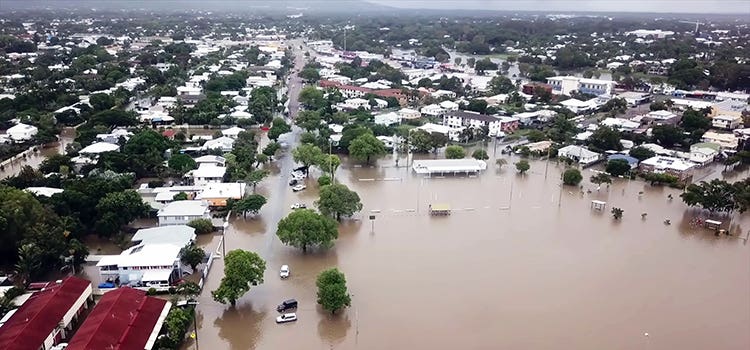Limiting global warming to 1.5°C would reduce risks to humans by up to 85%
Researchers find that the risks are reduced by 10-44% globally if warming is reduced to 1.5°C rather than 2°C or 3.66°C.

[June 30, 2022: Cat Bartman, University of East Anglia]
Researchers find that the risks are reduced by 10-44% globally if warming is reduced to 1.5°C rather than 2°C. (CREDIT: Getty Images)
New research led by the University of East Anglia (UEA) quantifies the benefits of limiting global warming to 1.5°C and identifies the hotspot regions for climate change risk in the future.
The study calculates reductions in human exposure to a series of risks - water scarcity and heat stress, vector-borne diseases, coastal and river flooding - that would result from limiting global warming to 1.5°C rather than 2°C or 3.66°C. Effects on agricultural yields and the economy are also included.
Researchers from the UK, including scientists from UEA and the University of Bristol, and from PBL Netherlands Environmental Assessment Agency, find that the risks are reduced by 10-44% globally if warming is reduced to 1.5°C rather than 2°C.
Currently, insufficient climate policy has been implemented globally to limit warming to 2°C, so the team also made a comparison with risks that would occur with higher levels of global warming.
Risks will be greater if global warming is greater. The risks at 3.66°C warming are reduced by 26–74% if instead warming is kept to only 2°C. They are reduced even further, by 32–85%, if warming can be limited to just 1.5°C. The ranges are wide because the percentage depends on which of the indicators, for example human exposure to drought or flooding, are being considered.
Related Stories
The findings, published today in the journal Climatic Change, suggest that in percentage terms, the avoided risk is highest for river flooding, drought, and heat stress, but in absolute terms the risk reduction is greatest for drought.
Global temperature change over the last 50 years. (CREDIT: Wikipedia)
The authors also identify West Africa, India and North America as regions where the risks caused by climate change are projected to increase the most with 1.5°C or 2°C of average global warming by 2100.
The study follows the Intergovernmental Panel on Climate Change (IPCC) Sixth Assessment Report, which finds that global net zero CO2 emissions must be reached in the early 2050s to limit warming to 1.5°C with no or limited overshoot, and around the early 2070s to limit warming to 2°C.
Lead author Prof Rachel Warren, of the Tyndall Centre for Climate Change Research at UEA, said: “Our findings are important because the Paris Agreement target is to limit global warming to ‘well below’ 2°C and to ‘pursue efforts’ to limit it to 1.5°C. This means that decision makers need to understand the benefits of aiming for the lower figure.
“In addition, at COP26 last year, the commitments made by countries in terms of greenhouse gas emission reductions are not sufficient to achieve the Paris goals. At present, current policies would result in average warming of 2.7°C, while the Nationally Determined Contributions for 2030 would limit warming to 2.1°C.
“While there are a number of planned additional actions to reduce emissions further, potentially limiting warming to 1.8°C in the most optimistic case, these still need to be delivered and further additional action is needed to limit warming to 1.5°C.”
For this study the researchers ran sophisticated computer simulations of climate change risk, using a common set of climate change scenarios in which global temperatures rise by 2°C and separately by 1.5°C and 3.66°C. They then compared the results.
The findings include:
Overall, global population exposure to malaria and dengue fever is 10% lower if warming is constrained to 1.5°C rather than 2°C.
Population exposure to water scarcity is most evident in western India and the northern region of West Africa.
A continuous increase in global drought risk with global warming is estimated, with hundreds of millions of people additionally affected by drought at each, successively higher warming level.
By 2100 if we do not adapt, global warming of 1.5°C would place an additional 41-88 million people a year at risk from coastal flooding globally (associated with 0.24-0.56 m of sea-level rise), whereas an additional 45-95 million people a year would be at risk under global warming of 2°C (corresponding to 0.27-0.64 m of sea-level rise) in 2100.
Global economic impacts of climate change are 20% lower when warming is limited to 1.5°C rather than 2°C. The net value of damages is correspondingly reduced from 61 trillion US dollars, to 39 trillion US dollars.
The study used 21 alternative climate models to simulate the regional patterns of climate change corresponding to 2°C warming and 1.5°C warming respectively. Previous research has used simpler models, a more limited range of climate models, or has covered different risk indicators.
‘Quantifying risks avoided by limiting global warming to 1.5 or 2 °C above pre‑industrial levels’, Rachel Warren et al, is published in Climatic Change on June 29.
For more environmental good news stories check out our Green Impact section at The Brighter Side of News.
Note: Materials provided above by University of East Anglia. Content may be edited for style and length.
Like these kind of feel good stories? Get the Brighter Side of News' newsletter.
Joshua Shavit
Science & Technology Writer | AI and Robotics Reporter
Joshua Shavit is a Los Angeles-based science and technology writer with a passion for exploring the breakthroughs shaping the future. As a contributor to The Brighter Side of News, he focuses on positive and transformative advancements in AI, technology, physics, engineering, robotics and space science. Joshua is currently working towards a Bachelor of Science in Business Administration at the University of California, Berkeley. He combines his academic background with a talent for storytelling, making complex scientific discoveries engaging and accessible. His work highlights the innovators behind the ideas, bringing readers closer to the people driving progress.
